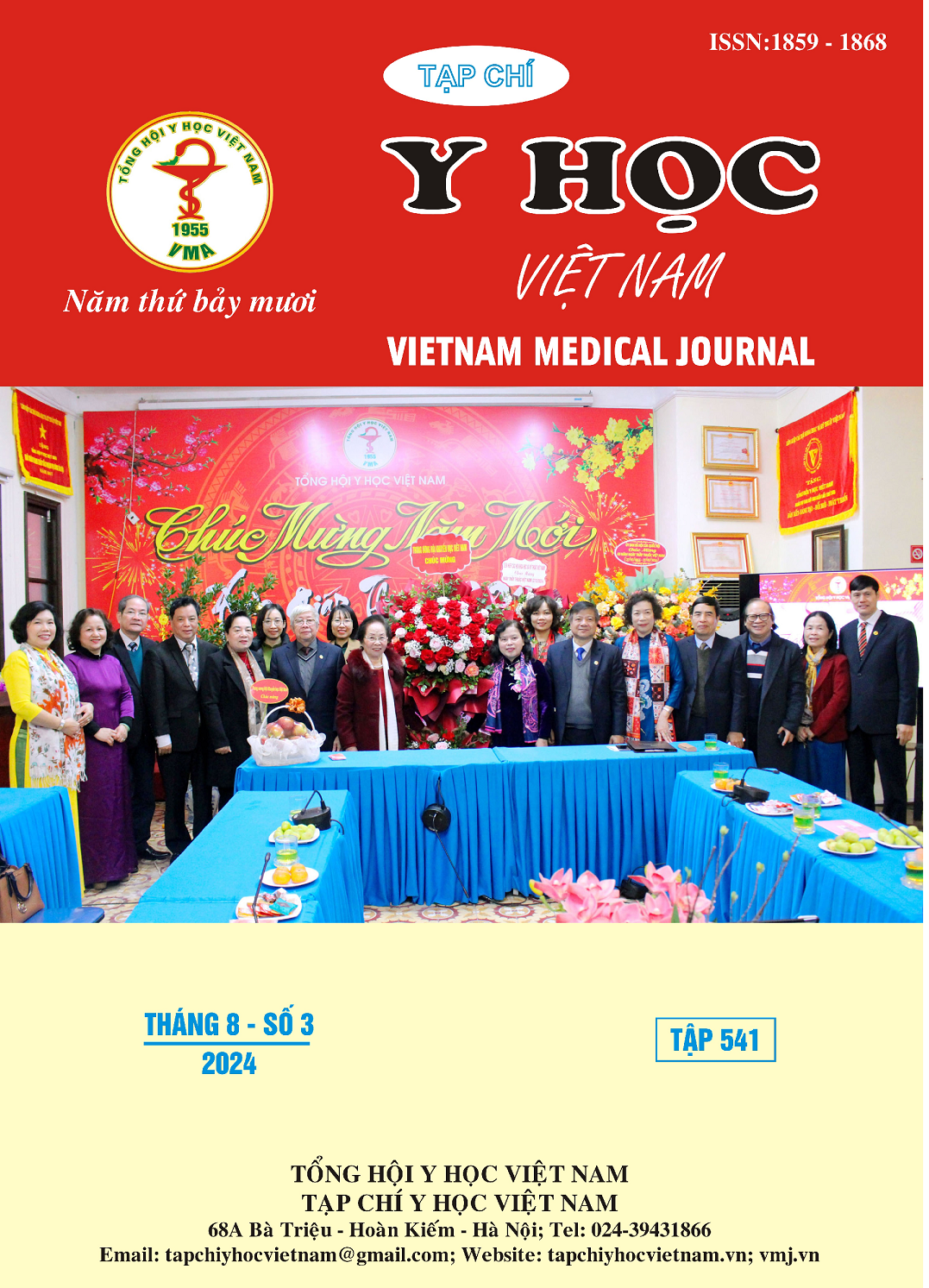SURVEYING INCREASED CIRCULATION IN THE CERVICAL SPINE AFTER EXERCISES OF NECK JOINT MOVEMENT EXERCISES ON HEALTHY PEOPLE
Main Article Content
Abstract
Object: The study aimed to evaluate the improvement of circulation through the relationship between the change in acupoint temperature and the amplitude of neck joint movement after implementing the method of neck joint movement 3 times, 5 times in Traditional Medicine at the Ho Chi Minh Hospital for Rehabilitation and Professional Diseases. Research subjects and methods: Descriptive cross-sectional study from March 2024 to June 2024. The study collected samples with 60 healthy volunteers from 18 years old who met the sampling criteria and did not meet the exclusion criteria at the Ho Chi Minh Hospital for Rehabilitation - Professional diseases. They had the ROM of the cervical spine joints measured using the body axis measurement and the acupoint temperature of the neck area using a FLIR C5 infrared thermometer. Result: he results showed that there was no statistically significant difference between the parameters measuring the temperature amplitude of the neck joint in pairs of groups of 3 times and 5 times (p > 0.05). Strong and very strong correlation between temperature change and movement amplitude change before and after exercising the neck joint 3 times and 5 times, respectively. There was a rate of 13.33% of unwanted effects in the group of 5 times Conclusion: Safe movement of the neck joints on healthy people increases ROM, increases the temperature of acupoints in the neck area, the strong correlation between the ROM of joint movement and the temperature of acupoints in the neck area partly increases circulation to theneck joint. Choosing a group that exercises the neck joint 3 times should be recommended to start exercising to help increase the range of motion of the neck joint.
Article Details
Keywords
neck ROM, acupoint temperature in the neck, cervical spine joint movement 3 times, 5 times, skin surface circulation, increased cỉculation in the cervical spine.
References
2. Kauther MD, Piotrowski M, Hussmann B, Lendemans S, Wedemeyer C. (2012), “Cervical range of motion and strength in 4,293 young male adults with chronic neck pain”. Eur Spine J;21(8):1522-1527.3.
3. Hartley R, Zisserman A. Multiple view geometry in computer vision: Cambridge university press; 2003.
4. Khánh PN, Thanh ĐQ, Khánh NH, et al. Khảo sát biên độ vận động cổ bằng phương pháp quang trắc và phương pháp Zero trên người khỏe mạnh. 2023; 9(3):173-178.
5. Võ Trọng Tuân, Nguyễn Thị Anh Đào. Xoa bóp bấm huyệt. NXB Y học TP Hồ Chí Minh; 2022.
6. Johnson JM, Rowell LB, Brengelmann GL. Modification of the skin blood flow-body temperature relationship by upright exercise. J Appl Physiol. 1974;37(6):880-886. doi:10.1152/ jappl.1974.37.6.880.
7. Lascurain-Aguirrebeña I, Newham D, Critchley DJ. Mechanism of action of spinal mobilizations. SPINE. 2016;41(2):159-172..
8. Feldman F, Nickoloff EL. Normal thermographic standards for the cervical spine and upper extremities. Skeletal Radiol 1984; 12(4): 235-249.


